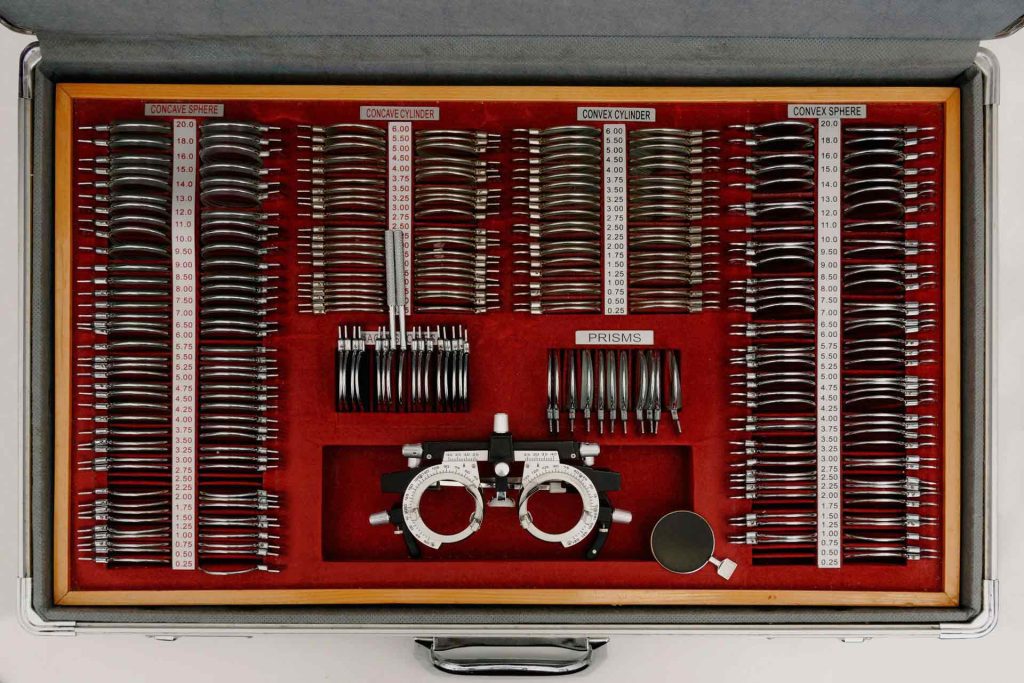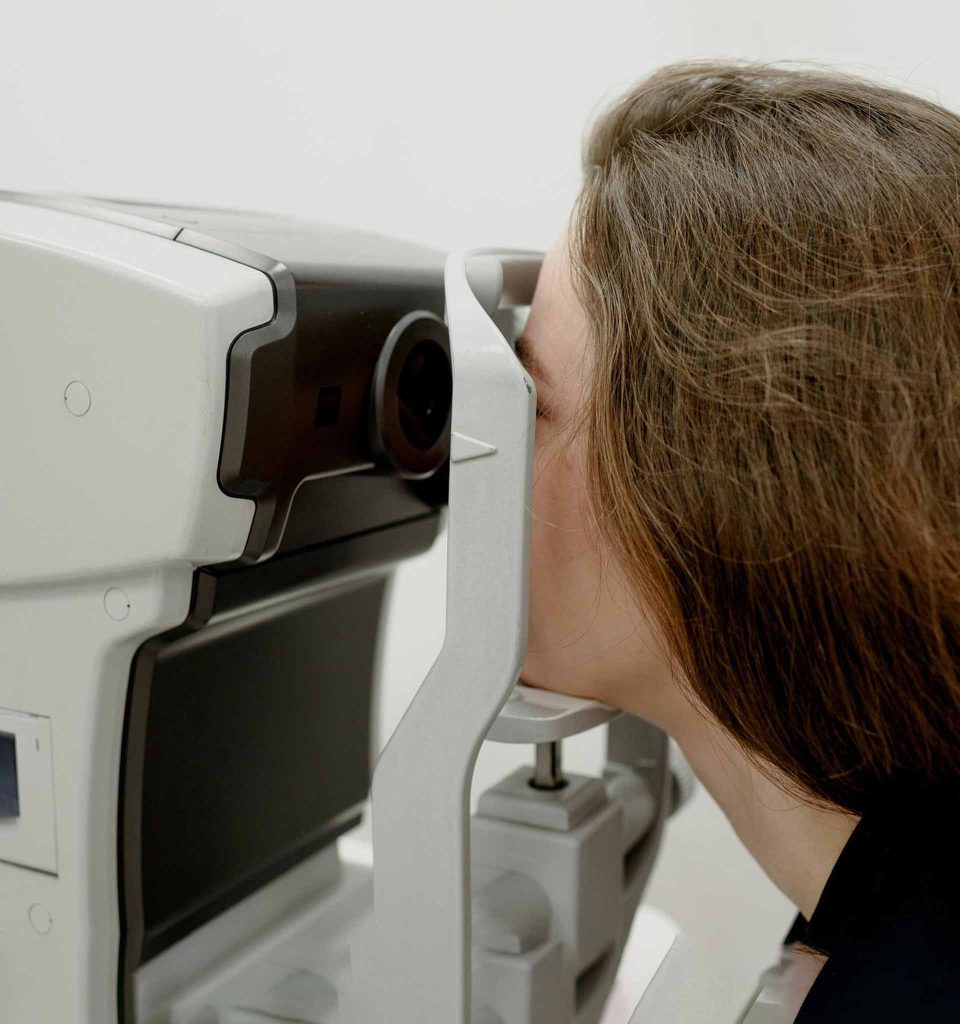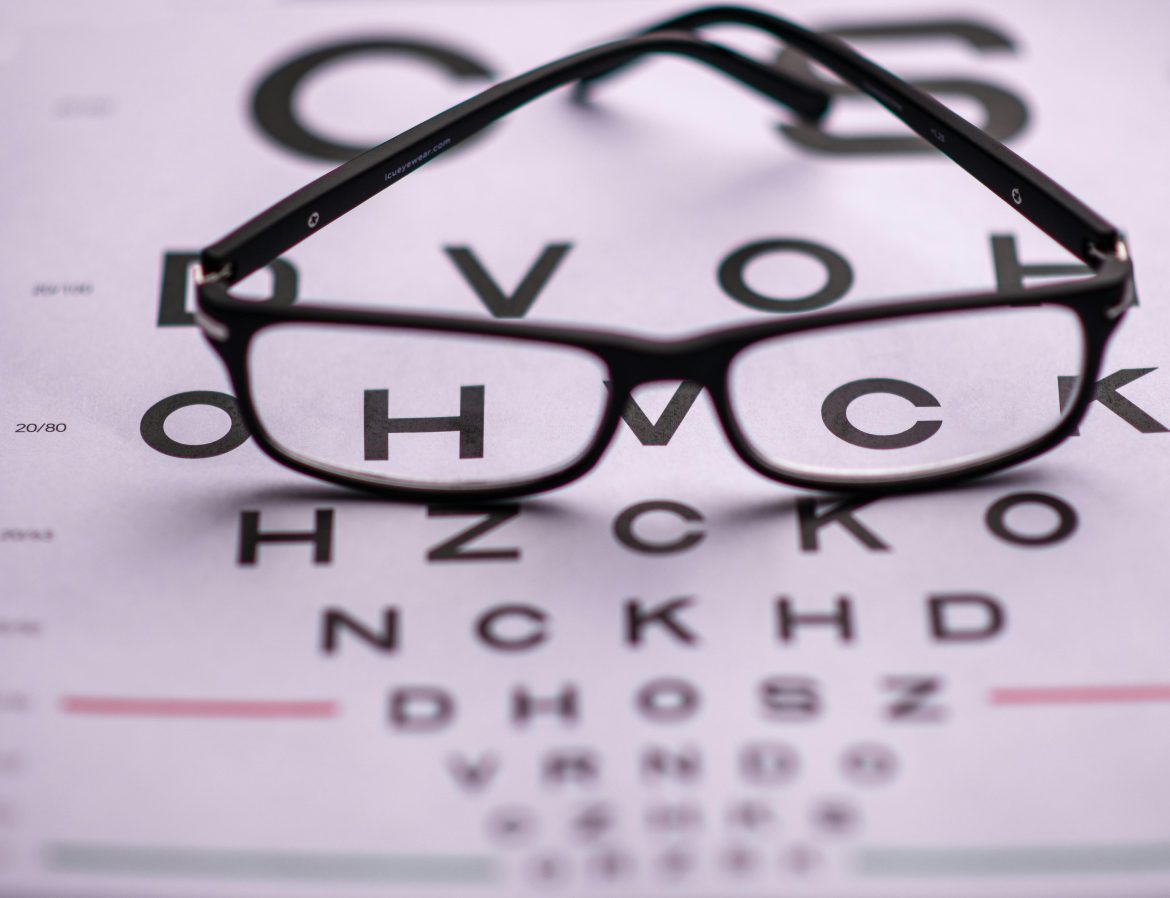![]()
Routine eye exams help keep your eyes healthy and your vision in focus. If scheduling an appointment has been on your to-do list, but you’ve been wondering, “How long does an eye exam take?” you’ve come to the right place!
In this article, I break down each step of the process, explain standard and optional tests, and offer a few tips to make the experience easier.
Before Heading to Your Eye Doctor
First, make a list of any problems you’ve been having with your eyes and vision. This will make it easy to address any concerns during scheduling and get advice from your doctor during your appointment.
Generally, it’s good practice to ask about the doctor’s requirements when booking your exam. If there’s any chance you need a dilated eye exam, consider scheduling a ride to and from the office.
Make sure you are well-rested for your eye examination. Strained eyes can cause temporary visual changes, making it harder for you to see as clearly as you usually do.
Also, if you currently wear contact lenses, you might be asked to remove them at least 2 hours before your appointment. Doing so allows your eyes to relax and return to their natural state so your doctor can accurately assess your vision. Alternatively, you might be asked to wear your lenses or bring them with you.
Your Eye Exam: A Step-by-Step Guide
Before answering the question, “How long does an eye exam take?” it’s essential to consider the process involved in a typical eye exam. Each of these steps has a purpose and is important in assessing your overall eye health.
1. Pre-Exam Procedures (5–10 minutes)
Before the actual eye exam, an attendant or technician will get relevant information about your eye health and medical history. Expect questions about your current eye conditions, medications, and vision changes since your last visit.
If you already wear eyeglasses or contact lenses, your current prescription will be compared to your updated needs. The technician will also perform a preliminary exam using a tonometer, a device used to spot early signs of glaucoma.
All this is routine, so expect it to be quick. This serves as the foundation for the rest of the exam.
2. Vision Testing (10–20 minutes)

Next up is the visual acuity test. This will help determine if you need corrective lenses or if there are any necessary changes to your current prescription.
Even those unfamiliar with eye exams might be aware of this well-known part of the experience. While seated at an instrument called a phoropter, you’ll test various lenses while attempting to identify letters and numbers on a vision chart posted across the room.
Your optometrist may also use an autorefractor, which measures how light changes when it enters your eye. To ensure you get the most accurate prescription, the doctor must pinpoint any refraction issues, such as nearsightedness, farsightedness, and astigmatism.
If color blindness is suspected or a depth perception test must be added, expect at least ten minutes to be added to this stage of the exam.
3. Eye Health Assessment (10–15 minutes)
Once the vision correction part of the exam is completed, your doctor will proceed to check the overall health of your eyes. This is typically done using a slit-lamp, a piece of equipment used to examine the front and back structures of the eye. It allows optometrists or ophthalmologists to check for corneal damage, cataracts, and other abnormalities.
A retinal examination often follows. The doctor will examine the back of your eye, including the retina, optic nerve, and blood vessels. This step usually requires drops to dilate your pupils so the doctor can get a better look. These generally cause light sensitivity and blurred vision for around 15 to 30 minutes.
4. Additional Tests (Variable)
Some patients may experience uncommon symptoms that require extra tests. Or, they could be older or qualify under risk factors for eye diseases.
A visual field test may be done to look for blind spots in the patient’s peripheral vision. This is essential for detecting glaucoma. If your doctor suspects nerve damage or retinal diseases, they may do an optical coherence tomography (OCT) scan. An OCT scan creates a 3D rendition of the retina for a more comprehensive assessment.
If you’re getting fitted for contacts, that will also add time to the eye examination. The optometrist will measure the shape of your eye to prescribe the best lenses for both comfort and a good fit.
Even with this specialized testing, the entire length of a standard eye exam shouldn’t be much more than an hour.
What Can Make an Eye Exam Take Longer?

Estimating how long an eye exam takes becomes more complex under certain patient-specific circumstances. For instance, a first-time visit may require a more comprehensive examination to determine a baseline for your overall eye health.
Some health conditions can also extend the length of an eye examination. People suffering from high blood pressure or diabetes may require additional screenings. Advanced tests, such as retinal imaging or visual field testing, may also add time to your appointment.
And remember, pupil dilation drops can extend your appointment, and the time it takes for your pupils to return to their normal size can delay your ability to drive after an exam.
You might also have some questions for the optometrist. As the patient, it’s always important to understand what’s going on with your eyes so you can continue to take care of them. It’s essential to give yourself time to get the information you need, so be sure to plan ahead.
How To Prepare for a Faster, More Efficient Eye Exam
- Bring your current glasses or contact lenses. This helps the eye doctor assess changes in your prescription.
- Know your medical history. Be ready to discuss any conditions or medications that you currently have. This could be affecting your eyesight.
- Write down concerns. Mention any vision problems or symptoms upfront.
- Avoid caffeine before your appointment. Coffee can raise eye pressure readings before an eye exam.
- Arrive at least 10 to 15 minutes early. Allow enough time for paperwork and pre-testing.
Final Thoughts
How long does an eye exam take? A routine eye exam typically lasts 30 to 60 minutes. The exact duration depends on your specific needs and the tests performed.
If the doctor finds that you need additional screenings, such as retinal imaging or visual field tests, your appointment may take longer.
Certain health conditions, like diabetes, high blood pressure, or glaucoma risk, can require a more in-depth evaluation. Any need for pupil dilation drops can also extend your visit. Be prepared and know what to expect.
Regular eye exams are essential for maintaining optimal eye health. They are the best way to catch problems early, so book an appointment with your optometrist and allot at least an hour of your day for it.


